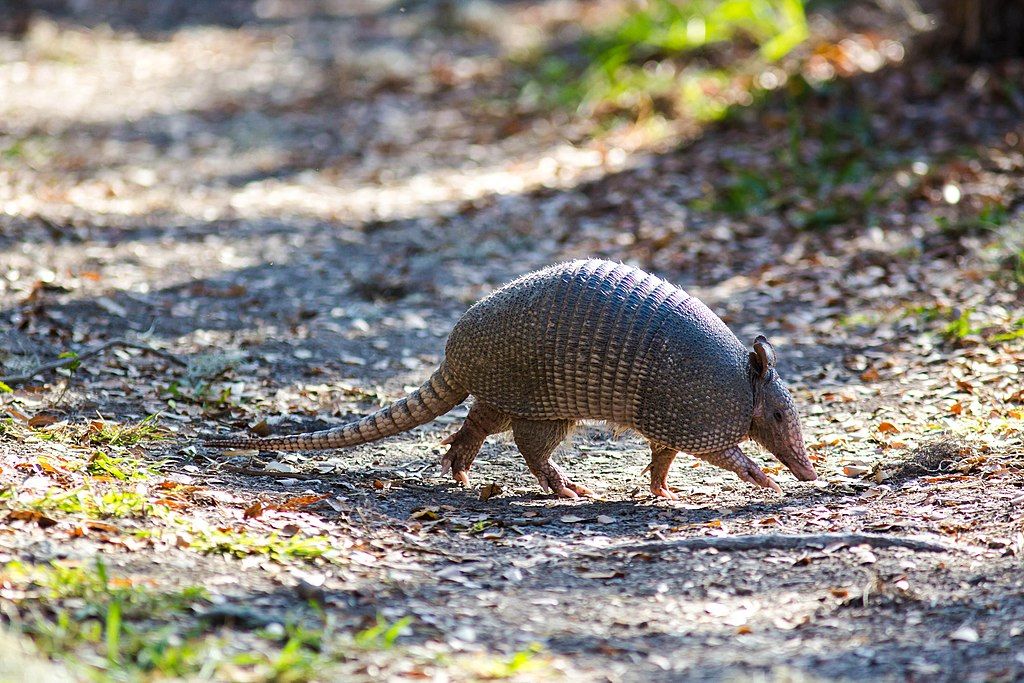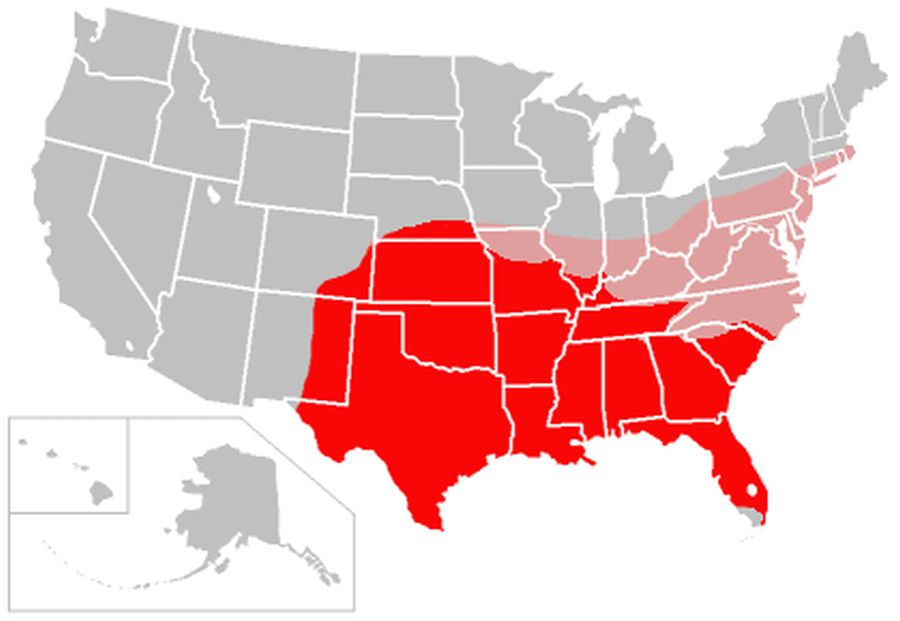
2 April 2023
Here in Pennsylvania when we see a photo of an armadillo we immediately think “Texas,” but we could just as well think Tennessee. Nine-banded armadillos expanded across Tennessee in less than 50 years and by the end of this century, probably sooner, they’ll walk into Pennsylvania. Their current (2006) and future ranges are shown on the map below.

Northward expansion is nothing new for armadillos. Originally from South America, where there are still 20 species, armadillos are part of the Great American Interchange that began 6.7 million years ago when Panama’s land bridge joined North and South America.
The surprising thing about armadillos, though, is that their expansion in the U.S. is nearly ten times faster than the average rate expected for a mammal. How soon they get to Pennsylvania depends on the speed of climate change.
Armadillos have no fur so they are sensitive to cold weather but not all of it. Yale Climate Connections says, “Researchers now believe that armadillos can thrive as long as average minimum temperatures stay above about 17 degrees Fahrenheit.” Pittsburgh has 12 to 32 days each winter that drop below 17, which are probably too many for an armadillo.
But just wait. They’ll get here. This video explains how and why.
Read more about their range expansion at Yale Climate Connections. Learn about armadillos at “Armadillo Online!“
(photos and map from Wikimedia Commons, video from Backyard Ecolocy on YouTube; click on the captions to see the originals)
Sounds like another invasive species that does not belong. Let’s not let it happen!
Interesting thought about armadillos but here’s a definition: “An invasive or alien species is an introduced species to an environment that becomes overpopulated and harms its new environment.” In the case of armadillos, they are native to the Americas, are naturally expanding their range and are nowhere overabundant. They just happen to be walking north in response to climate change. Climate change is going to make a lot of species move, including humans.
Let’s let nature take its course.
Awww yeah! Nature continues to roll out the TANKS!
They’re from the same continent/country. The real problem is humans disrespect for nature
They can carry leprosy.
Leprosy in armadillos: True. Humans gave them leprosy. We should not touch them so that we don’t get it back from them.
Info about leprosy: https://en.wikipedia.org/wiki/Leprosy
Leprosy is a bacterial infection spread between people, although extensive contact is necessary. It is not highly contagious. 95% of people who contract M. leprae do not develop the disease. Leprosy occurs more commonly among people living in poverty with more than half the new cases worldwide occurring in India.
Leprosy is curable with multidrug antibiotics therapy lasting 6-12 months. About 200 cases per year are reported in the United States. Compare this to 30,000 new cases of Lyme disease each year.
You can also catch leprosy by eating them so don’t touch or eat them
Some time around 2009-2010 I had 2 friends that swore up and down that they saw a armadillo one night and I thought they were full of it but now I’m rethinking that
Leprosy in armadillos: Thank you Kate, you are absolutely correct.
Saw a cougar/mountain lion in Heidelberg Scott area not bobcat . Do they eat armadillo or something bigger like deer or sheep?
The good old “Hoover Hog.” Good eating. Bring ‘em on Pennsylvania!
Eat more armadillo.